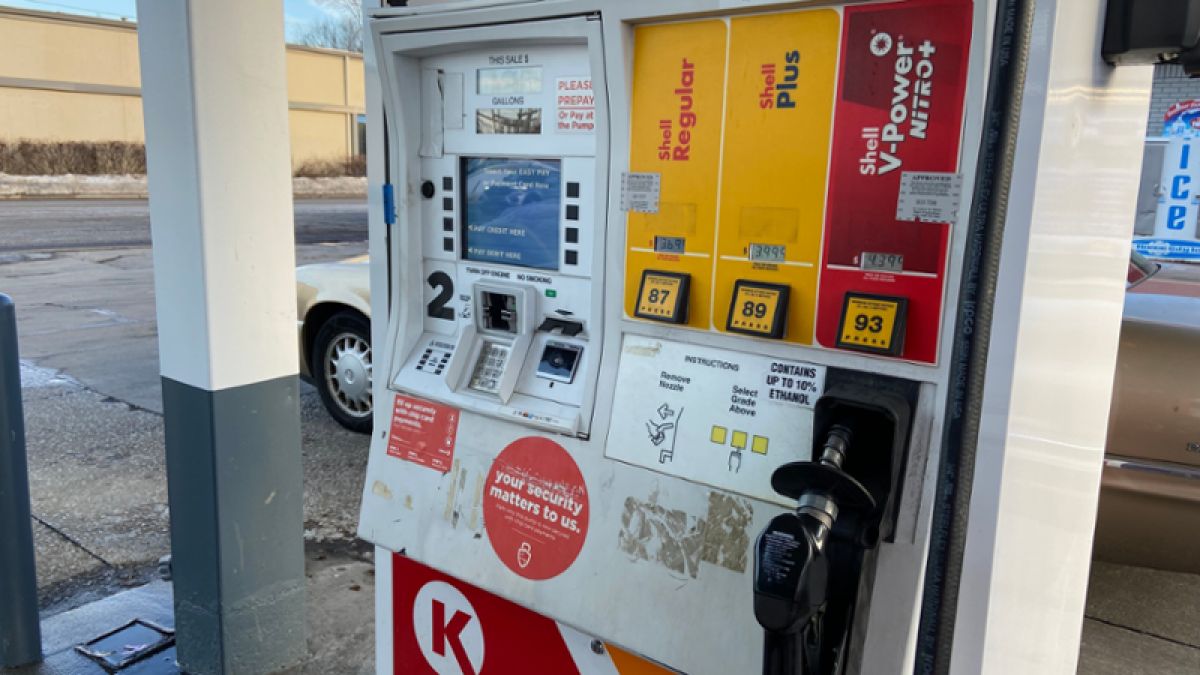
Incentivizing the production of corn under the Renewable Fuel Standard has contributed equal, if not more, emissions than those associated with the use of traditional gasoline, a new study finds. (Dana Cronin)
Congress passed the Renewable Fuel Standard in 2005, mandating a certain amount of renewable fuel – namely corn ethanol – be mixed in with traditional gasoline. The goal was to minimize emissions and the country’s dependence on foreign fossil fuels.
Instead, the policy caused a chain reaction of events that has likely led to even more carbon emissions, a new study says.
“The main takeaway is that U.S. renewable fuel policy, which is the largest biofuel program in the world, has likely increased rather than decreased climate-warming greenhouse gas emissions and other environmental pollutants,” says Tyler Lark, a scientist at the University of Wisconsin-Madison and a co-author of the study.
The U.S. saw a ten-fold expansion of ethanol production in the aftermath of the Renewable Fuel Standard. The price of corn shot up, incentivizing the conversion of natural grassland and pasture to corn production. Over the past two decades, millions of acres of U.S. land have been converted to cropland, adding to overall greenhouse gas emissions the study found.
“In general, when you convert something like a perennial grassland to an annually cultivated cropland, there are significant carbon emissions associated with that land use change,” Lark said.
A large proportion of agricultural emissions come from the use of fertilizer, which, when broken down, converts to nitrous oxide. That gas is 300 times more potent at warming the atmosphere than carbon dioxide, according to the U.S. Environmental Protection Agency. Tillage of the land can also release carbon that’s long been stored in the soil bed, resulting in significant carbon emissions to the atmosphere.
By incentivizing the production of corn, the study finds the Renewable Fuel Standard has contributed equal, if not more, emissions than those associated with the use of traditional gasoline. In fact, the study estimates emissions associated with the standard are at least 24% higher.
“This provides pretty good evidence that the direction that we’ve gone by mandating more corn ethanol production is only making climate change worse,” said Jason Hill, a professor at the University of Minnesota who researches the environmental impact of agriculture but was not involved in this study.
The findings come at a time when the EPA is considering changes to the Renewable Fuel Standard. The original standard set mandates to expire in 2022, and left it up to the EPA to determine standards thereafter. The agency is expected to announce the new blending requirements in May, to be enacted in 2023.
In an email, a representative from the EPA said the agency is reviewing the paper.
Meanwhile, proponents of biofuel argue the study overstates the environmental impact of corn ethanol.
Emily Skor, CEO of biofuel trade group Growth Energy, wrote in a blog post that “there is simply no evidence that the RFS increases (greenhouse gas) emissions on a lifecycle basis, compared to gasoline.” In the post, she links to research paid for by her organization.
U.S. Senator Chuck Grassley, R-Iowa, a vocal proponent of corn ethanol, said Tuesday morning that he’d not yet read the study, but rejected its findings. Iowa is the leading producer of ethanol across the country.
“It’s going against 30 years of common sense about ethanol being cleaner burning than petroleum,” he said.
Hill said the study confirms long-held suspicions about corn ethanol’s environmental impact and could affect how the EPA decides to move forward with biofuel blending requirements.
“The EPA has a number of concerns that it must balance in how it sets those volumes,” he said.
The study involved researchers across disciplines and institutions, including University of Wisconsin-Madison, Kansas State University and University of California, Davis. It was financially supported by grants from the National Wildlife Federation, the National Science Foundation and the U.S. Department of Energy.













